‘European premiere of classic American musical’ is a phrase that deeply alarms the experienced playgoer. As I tootled along to Southwark Playhouse I asked myself why this Rodgers and Hammerstein masterpiece had taken so long to plough its way across the ocean. In 1947 the Broadway prodigies decided to follow up their first two hits, Oklahoma! and Carousel, with a brand new storyline drawn entirely from their imaginations. The plan was to extoll the life of the ordinary Midwest Joe and they created a figure (Joe Jr, after his dad), living in a backwater in the early years of the 20th century.
The script doggedly stalks Joe Jr through every phase of his morally exemplary and supremely tedious existence. He’s born, he endures the ordeals of infancy, he graduates to adolescence, he wins a college place, he follows his father into the medical profession, and he marries a mincing nobody in a skirt. In the unventilated theatre, this worthy pageant unfolded without the slightest trace of narrative surprise or psychological interest. Not much to hum along to either. Even the song titles seemed to fall dead from the programme: ‘Poor Joe’, ‘A Darn Nice Campus’, ‘Two Short Years’, ‘Winters Go By’. At the interval the parched crowd slouched out into the humid pavements of Southwark, swooning from sensory deprivation. Ten precious minutes later, we groaned back in.
The second act was enlivened by two dramatic molehills. First, Dr Dimwit’s shrill flapper of a wife began a dalliance with a rival quack. Then the Doc was offered a prestigious job in Chicago which, not surprisingly, he rejected during a soirée organised to celebrate his promotion. This counter-climax marked the closing term in a sequence of orchestrated comedowns that left everyone wondering if Rodgers and Hammerstein had really intended this as a piece of theatre or as euthanasia treatment.
Hardcore fans will want to catch this production out of sheer curiosity and they’ll see a decent version of a doomed script with a spirited and disciplined cast. But much of the action is puzzlingly staged on rickety ladders and high perches joined by wobbly wooden platforms. To watch performers belting out songs at full tilt while teetering inches from a ten-foot drop is a distinctly unrestful experience. Top marks to Gary Tushaw, who shines in the role of the gutless Doc. Tushaw sings beautifully and he acts with conviction too. His account of an emotional breakdown, always tricky terrain for a thesp, is perfectly authentic. There are two lessons to learn from this well-crafted dud. Even the greats falter. And shrewd writers should always adapt a new musical from a work with an existing fan base.
Like Groundhog Day at the Old Vic. The fairy-tale story follows a heartless cynic trapped by fate in a existential jail he can only escape by discovering human kindness. The movie starred Bill Murray as Phil Connors, a smug weatherman despatched to a country town to cover a folksy midwinter ritual. The role seemed to define Murray’s capacities on screen and everything he brought to the show is missing here. His melancholy acne-bitten features, his startled girlish pout, his air of drollery and bitterness, his lugubrious frivolity. Instead we have Andy Karl, whose perky, wholesome face has the dead-safe symmetry of a champion swimmer or an insurance clerk. Because he’s tall, slick and handsome, it’s hard to warm to his polished contempt as he prowls his rural prison mocking and humiliating its cheerily contented residents. But he sings powerfully and he has the right physicality for the clowning that forms a large part of the show. Carlyss Peer is fine too as the simpering nunnish temptress who lures Connors back to the fold of humanity.
Tim Minchin’s inventive lyrics are fun to follow but the show succeeds primarily as a spectacle. The brilliantly complex sets are supplemented by some fine sight gags and trompe l’oeil effects. An actor steps behind a bath curtain and emerges a split second later on the far side of the stage. A scene showing traffic stalled in a blizzard would be impossible to replicate in a theatre. Solution: a miniature pick-up truck is illuminated, centre-stage, while a spare actor ambles across and upends a shovel full of fake snow onto its roof. Witty, charming and novel. Everything you could want from a song-and-dance production and yet I didn’t enjoy it much because I have an unnaturally high threshold of resistance to musicals. My heartstrings are like those stiff ferrous shafts that reinforce concrete spurs in tower-blocks.
But even I detected a few oscillations of the ironworks as the show mounted to its emotional climax and the newly freed captive, hand-in-hand with his deflowered bride, stumbled out into the first golden rays of spring. Good news for the investors. Job done. Money safe. It’s a hit.
Got something to add? Join the discussion and comment below.
Get 10 issues for just $10
Subscribe to The Spectator Australia today for the next 10 magazine issues, plus full online access, for just $10.

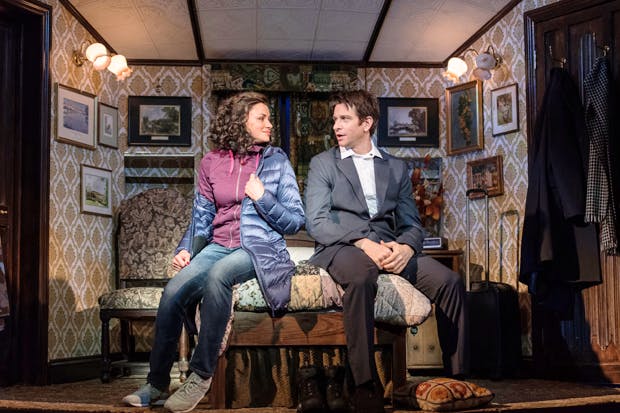
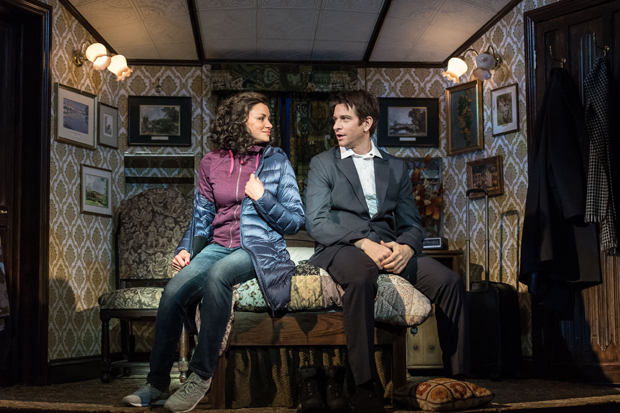
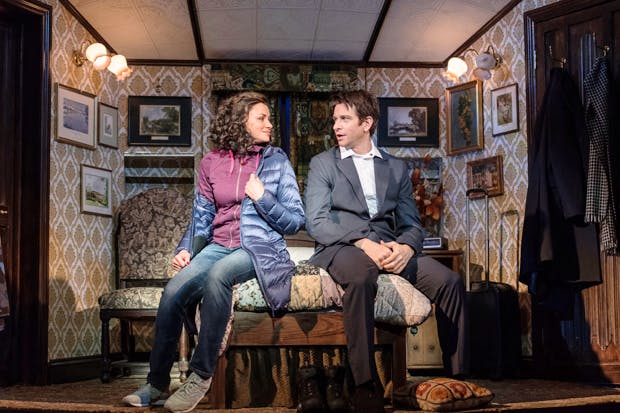

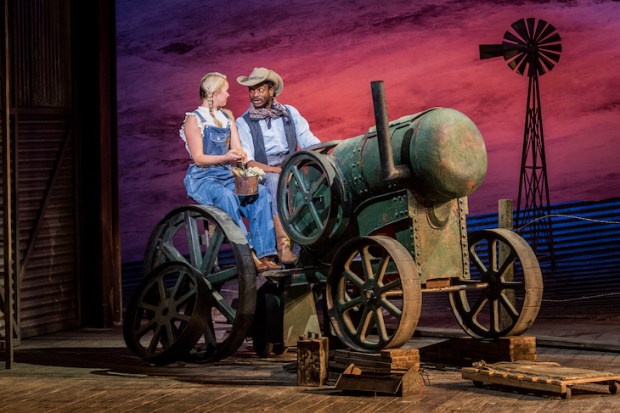
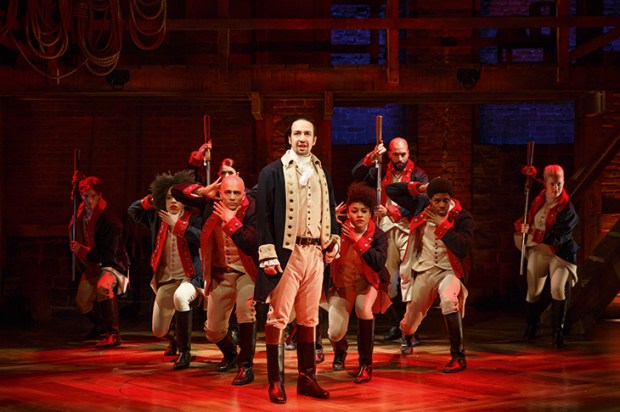







Comments
Don't miss out
Join the conversation with other Spectator Australia readers. Subscribe to leave a comment.
SUBSCRIBEAlready a subscriber? Log in